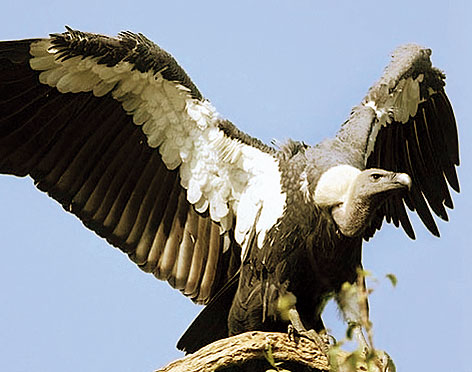A four-member team from Rajiv Gandhi University traced a small group of critically endangered species of white rumped vultures (Gyps bengalensis), six on flight and two perched, in Mahadevpur under Namsai district on Thursday after four days of survey in the areas on receiving information.
The group members were T. Kimsing, Jacob Ngukir, Talo Biju and Daniel Mize.
Mize told The Telegraph on Friday that the sighting of the vultures proved that the habitat condition of the area is still suitable for the species and appealed to the government and locals to take care of the endangered species.
The team said the particular species is listed among the critically endangered species in the IUCN’s red list because of its rapid decline in population which is estimated to be approximately 10,000 in the world.
According to Mize, the presence of other species of vultures in the area has been reported by locals. White rumped vultures prefer a habitat with open vegetation, warm climate and lowlands below 1,200m elevation throughout its distribution regions. He said the sighting of white rumped vultures is significant information for their conservation and management. “Such sightings will offer bird enthusiasts and conservationists an opportunity to plan for in-situ conservation of the bird and to understand more about the ecological aspect for conservation intervention.”
The team interacted with locals, who said the vulture population is decreasing in the area as sightings have become very rare compared to the past, with the groups consisting smaller numbers unlike earlier.
The decline in the population is because of gradual degradation of habitats, less availability of food because of low wild population and less popularity of rearing livestock in present times.
Team members met local people and discussed the restriction in using banned drugs, diclofenac and conserving big trees which the species use for resting.











